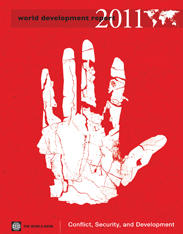
In May, the World Bank published its 2011 World Development Report, in which it considered civil wars and organized crime to be obstacles to economic development. However, without properly examining the problems of unequal land distribution and open access to land, the recommended policies in the report will not be enough to end violence in many countries, including Colombia.
Conflict scholars are divided into two major groups, and research for the World Bank Report was contributed by both of them. One group argues that civil wars and criminal violence largely depend on the expected costs and benefits of violence. In other words, if the cost of joining a rebel or criminal group is low and the expected gain is higher, individuals may be persuaded to join. This is especially relevant in Colombia, according to this group, given the anemic employment market and low economic growth rate, which is compounded by the weak dissuasive power of the state. The second group of scholars considers factors such as democracy, ethnic fractionalization, and political grievances in their analysis of a conflict. Both groups have contributed to an improved understanding of civil wars.
Despite the analysis of Colombia’s civil conflict by both groups, the literature suffers from serious conceptual and methodological problems, including inconsistencies in the data sets used and the omission of key variables. For example, most of these studies depend on aggregate indicators, ignoring the fact that most organized violence, including insurgencies, is local, and therefore only affects certain areas and groups. The macro-level aggregation is unable to capture this reality. More importantly, however, the literature largely ignores class conflicts, conflict dynamics, history, and the political economy of the country, as well as that of the conflict itself.
These inconsistencies and oversights explain why the conflict in Colombia has often been misdiagnosed, as the literature often underplays the centrality of the struggle to access land. The Colombian state has consistently favored large land-owners and cattle ranchers at the expense of landless peasants and small land-owners. Without understanding the problem of unequal land distribution, the analysis of Colombia’s civil conflict remains, at best, incomplete.
Colombia needs to revisit its neoliberal economic model of development if it wants to break out of the so-called “conflict trap,” or what I have described throughout my work as a “war system.” It also must rethink its rural economy, which is currently based on an extraction-agribusiness model, and transition to one that encourages and protects small peasant production. Currently, cattle ranchers are using 41 million hectares of fertile land, which was previously used for food production, to sustain some 21 million cows (an average of about two hectares per cow), suggesting that the country could pursue a more rational and productive land allocation policy.
Knowing that a significant portion of this land was usurped through blood and fire, we can better understand the conflict dynamics and political economic factors than the two groups of conflict scholars who informed the 2011 World Bank Report.

